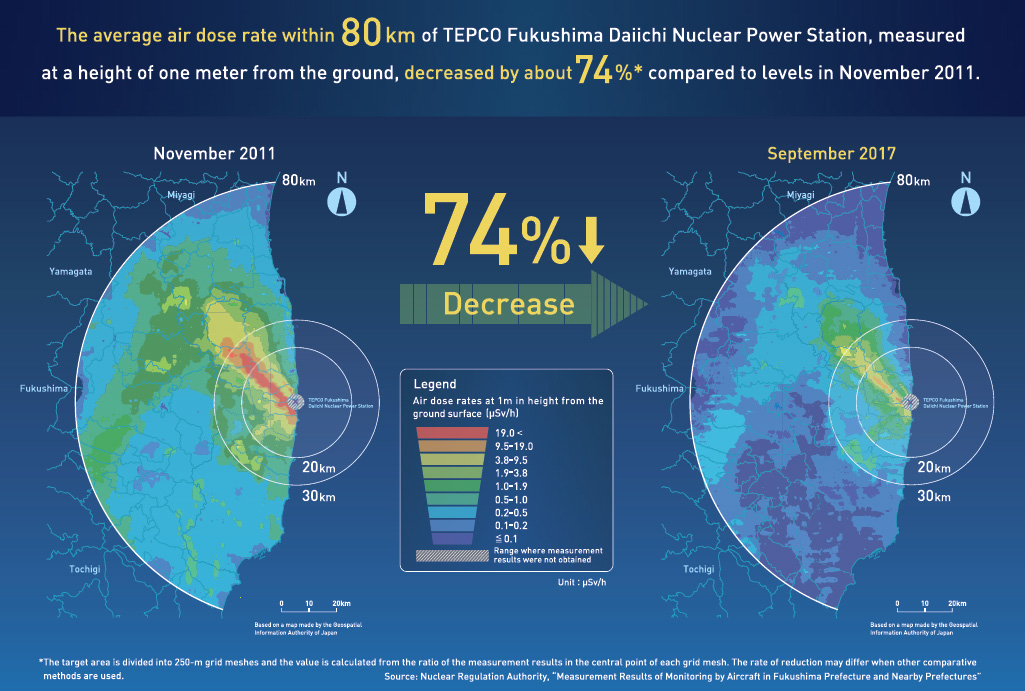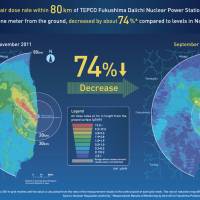One of the government's missions is to minimize fears of radioactive contamination stemming from Fukushima's nuclear disaster caused by the Great East Japan Earthquake and tsunami.
Fukushima Prefecture is very rich in agriculture, and to overcome the negative image plaguing produce, stricter safety standards have been introduced to ensure radiation levels in food are well below maximum acceptable levels.
Japan's standards for food radiation levels are much stricter compared to the rest of the world. For example, Japan allows only 10 becquerels (a measure of radioactivity) per kilogram of drinking water, 50 becquerels in milk, 50 becquerels in baby food and 100 becquerels in general food. This compares to E.U. figures of 1,000 becquerels per kilogram of drinking water, 1,000 becquerels in dairy products, 400 becquerels in baby food and 1,250 becquerels in general food, according to the Reconstruction Agency.
Additionally, the U.S. allows 1,200 becquerels per kilogram in all food. The Codex (an international intergovernmental body created by the U.N. Food and Agriculture Organization and World Health Organization) standard is 1,000 becquerels per kilogram for both baby and general foods.
To increase food security of Fukushima's produce, the government is encouraging Fukushima farmers to acquire Good Agricultural Practice (GAP) recognition.
There are four kinds of GAP certifications they can obtain — Global GAP, AsiaGAP, JGAP (Japan GAP) and FGAP (Fukushima GAP).
Germany's FoodPlus GmbH issues Global GAP certifications, while AsiaGAP and JGAP certifications are issued by the Japan GAP Foundation. Fukushima Prefecture oversees FGAP.
GAP certification not only ensures food safety, but also indicates environmentally friendly food production, safety of food industry workers and other conditions. FGAP requirements also focus on measures to control radiation levels in food and establish strict regulations on compliance and record keeping.
Fukushima Prefecture hopes to increase the number from 77 to 361 by fiscal 2020.



















With your current subscription plan you can comment on stories. However, before writing your first comment, please create a display name in the Profile section of your subscriber account page.